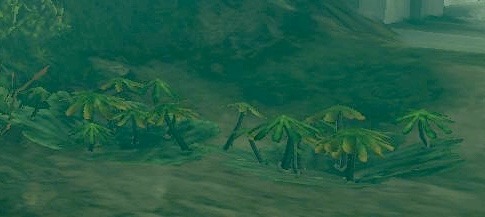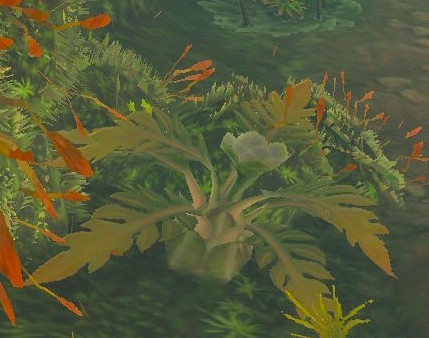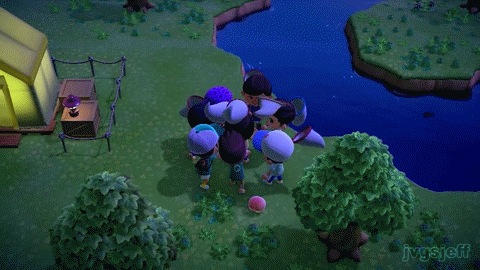Purplecrocochameleon



-
 heartbuckles liked this · 1 year ago
heartbuckles liked this · 1 year ago -
 hopefully-inspiring-persona liked this · 1 year ago
hopefully-inspiring-persona liked this · 1 year ago -
 ace-pervert liked this · 1 year ago
ace-pervert liked this · 1 year ago -
 glitterboycunt liked this · 1 year ago
glitterboycunt liked this · 1 year ago -
 sigmanta liked this · 1 year ago
sigmanta liked this · 1 year ago -
 shieroe liked this · 1 year ago
shieroe liked this · 1 year ago
More Posts from Purplecrocochameleon
As promised, welcome to
Fun biology in TOTK’s designs
I'll keep this post updated as I go through the game. I'm going to skip the more general identifiable things like apples (they're based on apples!) because there are tons of more unusual species to talk about.
Overall, the really interesting thing I've noticed is that many of the more unique Earth-based lifeforms in TOTK are super ancient, like predating dinosaurs ancient, which is a really cool tie-in to the overall time-hopping plotline of TOTK. Specifically, they're found in the new areas (caves, depths) while the surface remains a bit more normal.
(There will be no plot spoilers in this post, and also I've barely gotten into the plot because I'm spending all my time wandering, so shhh no spoilers in the tags for like a month please.)
Most recent additions: Frox, coral fossils?, and deep fireflies hypothesis 2
PLANTS
Bryophytes my beloved. Bryophytes are among the earliest land plants, waaaay predating flowers and even seeds. In our world, they’re small by necessity—they lack vascular systems to help move water around like other plants, so they have to stay small and moist (hence their frequency in caves in TOTK—though they do need some light in real life.)
In TOTK they’re quite large and I think that’s very sexy and art directors should give us big bryophytes more often
Anyway, there are three types of bryophytes: mosses, liverworts, and hornworts. Left image is a moss, right is a liverwort. Those red-brown and palm-tree-like structures, respectively, are their reproductive structures.


Not yet spotted: Hornworts! Did they forget the third bryophyte sister :(
I think these next guys are probably lycopods (specifically club moss, which is not a true bryophyte moss, thanks science.) Very old, but vascular, so they're a bit more evolutionarily recent than bryophytes.

All the enormous curly-topped trees in the depths: Ferns! Another very old plant, though younger than bryophytes and lycopods.

Brightblooms and some of the other giant plants in the depths: Possibly based on a cycad? Again, a very ancient plant lineage. At this point, evolutionarily, they've developed seeds—that giant cone in the center is called a strobilus, and that's the seed structure.


These next few plants are angiosperms, meaning they produce flowers. Angiosperms are a more recent evolutionary lineage—still many millions of years old, but it took a while to develop flowers as a reproductive tactic.
Sundelions (left) are a fun recolor of a lily. I wanted to point out that the artists did a nice job with the overall accuracy on the shape and parts—though they only have 5 stamens instead of the lily's characteristic 6, but hey, fantasy. There are also some scenery lilies in various places—I found these (right img) in the depths but near a lightroot (which gives them literal and thematic connection to the surface.)


These next ones are Peruvian lilies/Alstroemeria, just used as a scenery plant but a very fun inclusion. Fun fact, not true lilies, so they're not deadly to cats like true lilies are.


Real photo © Dick Culbert, Wikipedia
Plum trees: These are also called out as plum trees in game! There's a journal in Kakariko that refers to the plum orchards.


Okay I'm a little proud of figuring this one out. Bomb flowers blend a few botanical references. Superficially, the fruit resembles a type of seed pod called a capsule—specifically it's very similar to a poppy capsule. The little red thing in the center is a nice addition to resemble both a flower stigma (reproductive part that leads to the ovary) and a bomb fuse. Now, poppy capsules disperse their seeds via wind, but there are other plants who do explode their seeds outwards as a dispersal tactic! This is called explosive dehiscence.
There is one tree in particular called the sandbox tree, AKA monkey-no-climb or dynamite tree (yes, really.) Their capsules look more like little pumpkins, but are known for violently exploding when ripe—they can launch seeds at 150 miles per hour (250 km/h) and spread them roughly 200 feet (60 m) away. The photo comparison is a poppy capsule but you should def go look up dynamite tree videos.


Real photo © PommeGrenade, pixabay
Fire fruits (and the other elemental fruits) grow on the same generic plant that looks kind of like it has grape leaves. Fire fruits resemble a specific botanical thing too though—the black netting is a papery calyx (part of the flower) seen in a nightshade genus, Physalis (golden berries, tomatillos, etc.)


Real photo © Helene Rogers, Alamy
MISCELLANEA
Cup lichen! Lichen is not a plant, but a symbiotic structure of an algae + a fungi. Cup lichen is just a type of lichen formation that has a kind of vertical cup-like structure.

Geology crossover! Go look carefully at some of the whiter walls in the depths—they look like they have fossils of coral and other undersea hard-structured animals in them.


ANIMALS
Sticky lizards: Based on Diplocaulus, a very early (now extinct) amphibian! Their skulls are wacky. We're not sure whether the long sides stood out separately or were smoothly connected to the body by skin flaps, but the separate arrow-like shape is the most popular rendition.


Deep firefly: Might be a stretch because it could just be a multi-winged fantasy critter, but I think the "wings" and antennae are very reminiscent of Anomalocaris, an ancient aquatic arthropod.
Update: Other folks in the notes/tags have pointed out that they're probably based on a cryptid that's popular in Japan: skyfish AKA rods! They show up in photos and people think they're an alien lifeform. In reality, they're an optical blur created when a lower quality video captures intermittent flaps of an insect's wings, leaving sort of a many-winged smear in the photo. Thanks to all who left info!



Little frox: Another stretch because it totally could just be a Hinox-like frog, but every time I see the little ones I can't help but think of like...Ichthyostega, Mastodonsaurus, Eryops, and other early amphibians. They were pretty hefty—little frox size or bigger—and had with little waddling legs. This is less "I think it's definitely this" and more "it makes me happy when I picture frox as primitive amphibians."


That's all I've got for now! Will add more as I keep playing.




Kid Cat's vacation home: A Hero’s Secret Base

The Bolson Construction house is interesting. But the plot is empty and the house looks ugly from the outside. Why can't we build a nice cute house out of different-colored blocks with windows inside Tarrey Town. Without Link, this city would not exist. I feel abandoned





